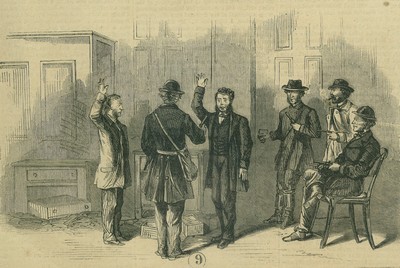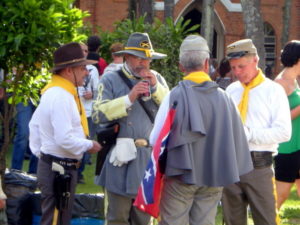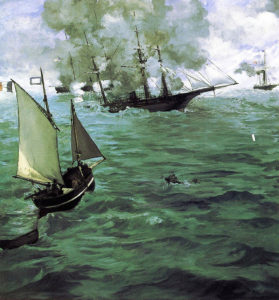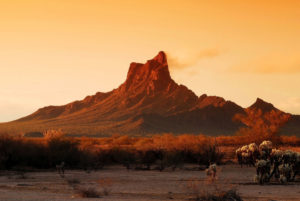While Gettysburg and Vicksburg and other significant battles get all the attention, the Civil War was fought across the expanse of the North and South … and beyond, in places one might not expect. Here are some lesser-known Civil War sites that, while not as famous or visited as their celebrated battlefield brethren, all played a role in the war that changed a nation.
St. Albans, Vermont

Wikimedia Commons
The Civil War may have raged much farther South, but an incident in the Vermont town of St. Albans reminds us of the expanse of the war’s influence. Exactly at 3 p.m. on October 19, 18tk, Confederate raiders simultaneously robbed three banks in this proper town, whisking away $208,000. Villagers were rounded up in the village green so as not to revolt; several resisted, and one was killed and another wounded. As they retreated, Young ordered that the town be burned (their bottles of Greek fire, however, failed to ignite). The raiders fled over the nearby Canada line, where they were caught. A court ruled they would not be extradited, since Canada was a neutral country, and $88,000 (all that was recovered) was returned to the St. Albans banks. That said, the Canadians felt the action was pulling them into a war they wanted nothing to do with, and so no further raids were conducted.
What to see today: Today, only one of the three banks still stands, the Franklin County Savings Bank (now a TD Bank branch). Other surviving sights include Taylor Park (where the townspeople were herded); and the American House (North Main St.) and the St. Albans House (60 Lake St.), where some of the raiders stayed. For more info: St Albans Visitor Information.
Brownsville, Texas
On May 12 and 13, 1865, 900 soldiers faced each other on a salt prairie east of Brownsville, at the southern tip of Texas, with the Confederates beating back a Union advance. The fact that the troops were fighting over an insignificant piece of land in the Battle of Palmito Ranch is not the point of this story. Rather, the incident took place 34 days AFTER Lee surrendered to Grant at Appomattox in Virginia, and 29 days AFTER Lincoln was assassinated. The Confederates won decisively in the final land battle of the Civil War, but in the overall scheme of things did little.
What to see today: Today, a small deck with informational panels overlooks the otherwise forgotten battlefield, where little has changed in the 150-plus years since. Preserved as the Palmito Ranch National Historic Landmark, you’ll find it on Boca Chica Highway (Texas State Highway 14), 14 miles east of Brownsville.
Santa Bárbara d’Oeste, Brazil

Felipeattilio, Wikimedia Commons
More than 10,000 Southerners fled to Brazil after the Civil War, where they established a colony in Santa Bárbara d’Oeste, north of Sao Paulo, that replicated their Southern lifestyle. Brazil’s emperor, Dom Pedro II, seduced them with cheap land to grow cotton–Brazil was the last country of the Americas to abolish slavery, in 1888. Over the years, the Confederados, as they called themselves, intermingled with the Brazilian culture, though some traditions remained. Every year, for example, Festa Confederada (Confederate Party) is a huge celebration commemorating the Confederate ancestry, featuring Southern food, hoop skirts, Confederate uniforms, and a painted Confederate flag graces the dance floor, infused with the sounds of battle hymns, bangos, and fiddles.
What to see today: The Festa Conederada takes place every year in April.
Cherbourg, France

Courtesy Library of Congress
The mighty CSS Alabama roamed the seven seas during the course of the Civil War in search of Union merchant ships–64 of which she captured. But then, in 1864, she needed repairs, and so she dropped into Cherbourg. Her captain, Raphael Semmes, sought permission from the emperor to enter the dry dock but, alas, his eminence was on vacation. The word got out, and the U.S. warship, USS Kearsarge, sped from the Netherlands for a fight. As they headed into battle, Semmes bolstered his crew: “The name of your ship has become a household word wherever civilization extends! Shall that name be tarnished by defeat? The thing is impossible! Remember that you are in the English Channel, the theater of so much of the naval glory of our race, and that the eyes of all Europe are at this moment upon you.” The Confederates fired first, and missed; the battle soon turned against the Alabama, and less than an hour into battle she was sunk. Almost half the crew was captured, though Semmes and several of his crew escaped.

Wikimedia Commons
What to see today: The most lasting result of this confrontation may very well be Edouard Manet’s masterful depiction of the battle, The Battle of the “Kearsarge” and the “Alabama,” now showcased in the Philadelphia Museum of Art.
Picacho Pass, Arizona

Wikimedia Commons
The Civil War’s westernmost battle unfolded on the slopes of Picacho Peak, a volcanic spire about 50 miles north of the present-day city of Tucson. A Confederate army under Capt. Sherod Hunter had occupied Tucson in an effort to expand the Confederacy westward. On April 15, 1862, a Union detachment of the 1st California Cavalry met a patrol of the Confederates along the Overland Stagecoach route near Picacho Peak, and they engaged. Involving only a dozen men, its casualties included three dead, three wounded, and three captured.
What to see today: There’s a small historic site at Picacho Peak, staffed by park rangers, and a reenactment takes place every March.